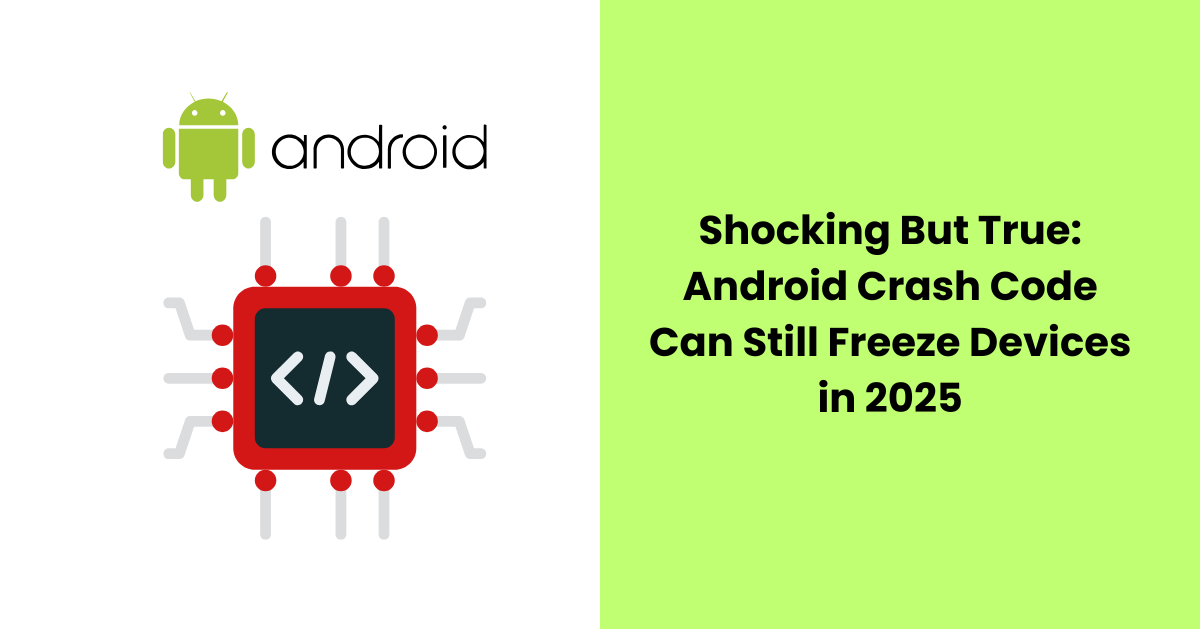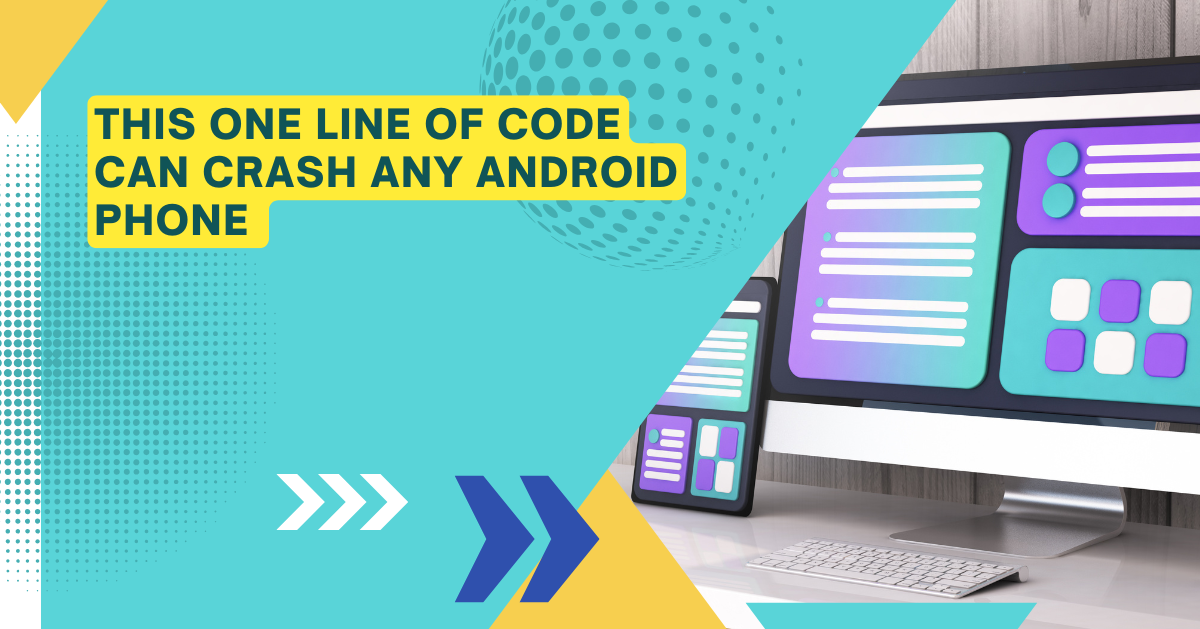Shocking But True: Android Crash Code Can Still Freeze Devices in 2025

Sounds like a movie hack, right? But in 2025, strange bugs still lurk deep inside even the most modern Android devices—and yes, some of them can be triggered with just one simple line of code.
In this article, we’ll explore one of the most bizarre Android glitches that’s making a comeback this year. We’ll also show you how to try it safely, and most importantly, why understanding these bugs matters more than ever.
Disclaimer (Read First!)
Before we begin, a quick but essential note:
This article is for educational purposes only. Do not misuse this trick to harm others or interfere with someone’s personal device without permission. Use this knowledge responsibly.
The “Android Crash Code” That Still Works in 2025
A number of years ago, a peculiar Unicode string was discovered which could render Android phones immediately (given the proper program control, of course). Even large phones produced by such brands as Samsung, OnePlus, and Xiaomi were exposed to risk.
The well-known snippet of the code would be as follows:
CopyEdit
<<~



This is not mere a group of emojis. It is a mixture of invisible Unicode characters such as zero-width joiners and formatting bugs that so confuse the text rendering engine of the Android system.
This line when shown as a notification, text message, or even chat on apps like WhatsApp or Telegram can:
-
- Freeze the app
-
- Crash the system UI
-
- Force the phone to reboot (in rare cases)
Try It on Your Own Phone (Safely)
Want to test it without harming your device? Here’s a safe method:
Safe Testing Steps:
-
- Open Google Keep or Notepad app
- Open Google Keep or Notepad app
-
- Paste the line:
<<~
~>>
- Paste the line:
-
- Save the note and try to reopen it
-
- Observe how some phones start lagging or the app behaves abnormally
It does not work on all android devices in 2025 (and does not on newer Android devices anymore, nearly exclusively those with Android 14+). Nevertheless, the device is still buggy on many mid-range phones, a problem that continues to exist because the rendering engine is not up to date.

The real culprit is the way Android’s text rendering engine handles invisible or zero-width Unicode characters.
These characters:
-
- Take no visible space
- Take no visible space
-
- Can combine with other emojis
-
- Confuse the text display logic
-
- Sometimes overload the rendering process
In technical terms, these cause what’s called a stack overflow or a memory handling glitch, which leads to app crashes or UI failures.
Why Knowing This Matters
You may wonder — “It’s just a prank code… so what?”
Well, here’s the serious part:
Cybersecurity Relevance:
-
- These bugs are often used in Android malware or phishing attacks.
-
- Hackers can crash messaging apps to distract users before launching a secondary exploit.
-
- Hidden characters like this are now being embedded in spam, ads, and malicious links.
So understanding them is important — not to abuse them, but to protect yourself and stay ahead of digital threats.
What NOT to Do with This Trick
Never send this crash code to someone else via:
-
- SMS
-
- Social media messages
Doing so may violate laws under digital harm or harassment, especially if someone loses data or faces phone damage. Always ask permission if you’re demonstrating this to a friend or colleague.
Tools to Experiment Further (For Developers and Geeks)
If you’re curious and want to go deeper into Unicode and crash testing:
Recommended Tools:
-
- Unicode Character Viewer – See the actual structure of invisible characters
-
- Hidden Pulse – A growing platform where you can generate invisible characters, zero-width joiners, and explore digital tricks for bios, usernames, and AI prompts. If you’re experimenting with Unicode-based content, this is your go-to tool.
-
- ADB + Emulator – Try crash commands in a controlled Android virtual machine
-
- Bug Reporting Forums – Share crash logs and help patch bugs responsibly
Why This Is Trending Again in 2025
As AI-generated content, memes, and glitch texts go viral, creators are embedding invisible codes into images, messages, and bios for:
-
- Profile uniqueness
-
- Hidden SEO (blackhat)
-
- Account impersonation
-
- Troll content
The Android crash code trend re-emerged because pranksters started using these lines in social comments and bio sections, catching users off-guard again.
Final Thoughts
Glitches such as the Android crash code are reminders that technology is very delicate and complicated in our daily life.
Just one invisible symbol in the wrong place, and boom — your app crashes.
And now that you have an idea of how, and why it happens, at least you are one step in front.
Explore it ethically. Use it to educate others. And always stay curious — because the next viral tech bug is just a line of code away. For more information, please visit: https://hiddenpulse.net/
FAQs:
Q1: What is the Android crash code in 2025?
It’s a Unicode-based string using invisible characters and emojis that can freeze or crash Android apps due to rendering engine glitches.
Q2: Is it safe to try the Android crash code?
Yes, if tested in a controlled environment like Google Keep or emulator. Never use it to harm others’ devices.
Q3: What is Hidden Pulse and how does it help?
Hidden Pulse is a platform to generate invisible characters like zero-width spaces, used for digital tricks, ethical testing, and creative text experiments.
Q4: Do invisible characters really crash phones?
Yes, certain combinations of invisible characters can overload Android’s text rendering system, causing temporary app crashes or system glitches.
Q5: Can I protect my phone from such crash codes?
Keep your phone updated, avoid unknown text messages or comments with strange characters, and disable message previews when possible.